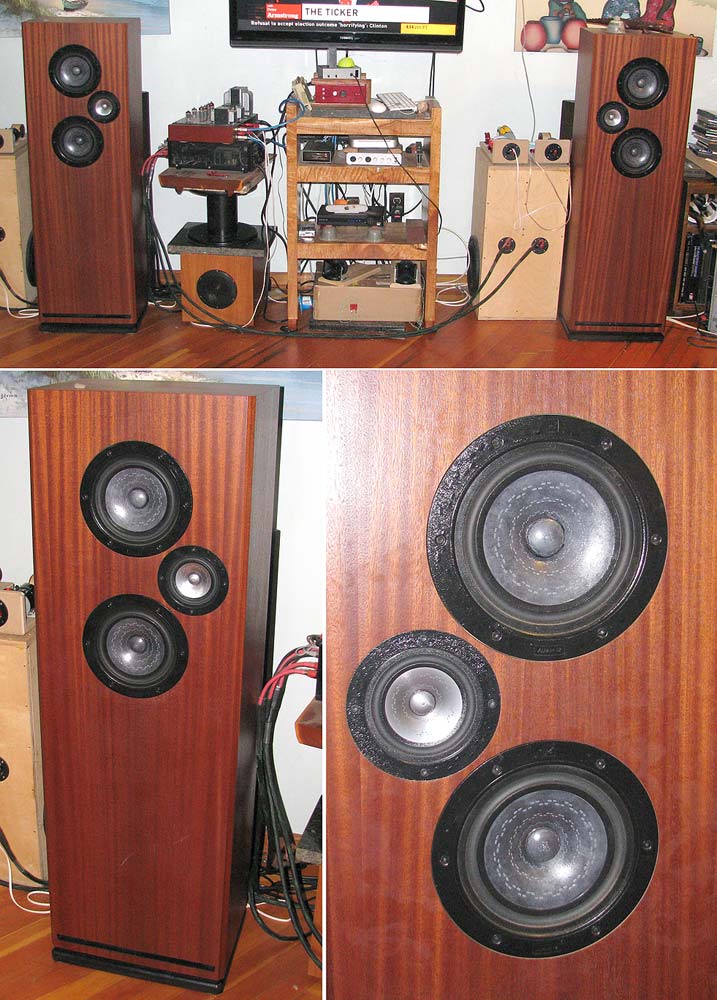I've already started building a small sealed standmount mtm, similar in layout to the old AE-2 but w very tightly grouped drivers. I'm using a small format tweeter and 15W rev's.
Any issues with the midbass drivers being so close, 1cm gap? Ie vertical sweetspot.
Any issues with the midbass drivers being so close, 1cm gap? Ie vertical sweetspot.
The closer you can get the driver a centre-to-centres tha represents a quarter waelength of the crossover frequency.
dave
dave
Mounting M and T close is always a good plan, IF you care about reducing vertical lobing. Vertical lobing can be problematic in certain listening conditions like acoustic hard floors and -to a lesser extent- ceilings nearby. Or one aims for a broad vertical sweet spot (but that often is less important)Any issues with the midbass drivers being so close, 1cm gap? Ie vertical sweetspot.
To me it has not much added value for the direct sound in normal listening (seated) positions. The drawback with MTM that are spaced closely is a more ragged tweeter response, as the radiation pattern of it is affected by the cones of both nearby mids.
Yes its the triangular arrangement of drivers, the centre to centre between all drivers is very close.
It was a comment on facebook that having the midbass driver v close can actually create a drawback, regarding vertical listening position
It was a comment on facebook that having the midbass driver v close can actually create a drawback, regarding vertical listening position
As much as everywhere else, it is important to examine a claim posted on Facebook. Comparing the output of a tweeter on a flat baffle with that on a baffle accompanied by two midbasses close by isn't that hard, if you'd like to check mine 😉
Its more about the close positioning of the two midbass drivers in an MTM arrangement. Because the listening height is more crucial? I'm just asking for feedback on this part, it worries me abit. A lower crossover wd help, but in this case I can't cross lower than approx 2500
The advantage of a MTM arrangement is the (vertical) symmetry of the lobing due to the phase differences between M and T drivers. But the setup requires pointing the drivers at the listening position, either by leveling or by canting the baffle. With a traditional MT-setup, you can adjust the crossover so that the listening axis points up- or downwards (i.e. not perpendicular to the baffle). At least in theory, this gives one more options.
Mounting M and T close is always a good plan, IF you care about reducing vertical lobing.
If you can get the centre-to-centre down to that magic quarter wave lobing goes away. It takes a very low XO. Here an example (also an offset MTM).

With it almost impossible to do with drivers usually chosen for an MTM, as close as possible.
dave
- Home
- Loudspeakers
- Multi-Way
- 'Offset' MTM standmount